Last updated on November 25th, 2025 at 05:35 pm
Explore our detailed Corfu maps to help you navigate the island’s beaches, roads, towns, and attractions.
Below are carefully curated maps in English and Greek to guide your trip effortlessly. We created these maps to provide travelers with all the information they need to explore this island.
Bonus tip: Download AtCorfu’s full Corfu Maps Pack PDF for use without an internet connection:
👉 Click here to get the Corfu Maps Pack (PDF)
🗺️ General Tourist Maps of Corfu Island
Corfu Island Large Road Map
A comprehensive map of the Corfu island, showing all major towns, roads, and landmarks with names in both English and Greek — perfect for easy orientation and for bilingual travelers.


Tourist Corfu Map Including the Larger Villages
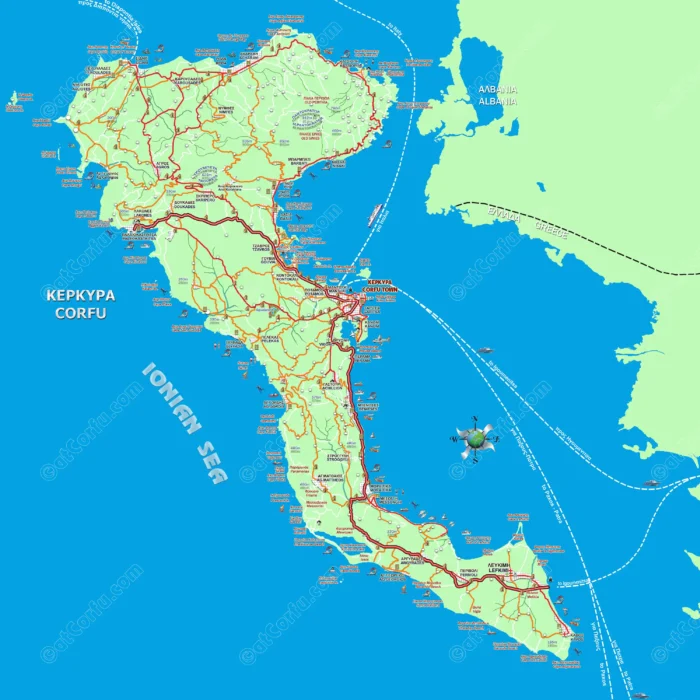

A tourist-friendly map combining the larger points of interest, transportation hubs, beaches, and walking routes, designed to maximize your Corfu experience.
View Full Map
🏛️ Maps of Corfu Town & Old City Walks
The maps of Corfu town were designed with a focus on the historic center.
This medieval quarter largely took shape under Venetian rule. Its streets are narrow, irregular, and intended for pedestrians—both then and now. Many lanes are so tight between houses that cars cannot pass.
The only real open space is the vast Esplanade Square, while the area in front of the Old Fortress is rendered with an artistic touch on the map.
The main thoroughfare is Nikiforos Theotokis Street, which begins at the Liston and ends at Spilia, the harbor district at the base of the New Fortress.
Today, all routes inside the old town are pedestrian, while vehicle traffic circulates on regional roads around it.
Corfu Old Town Walking Map
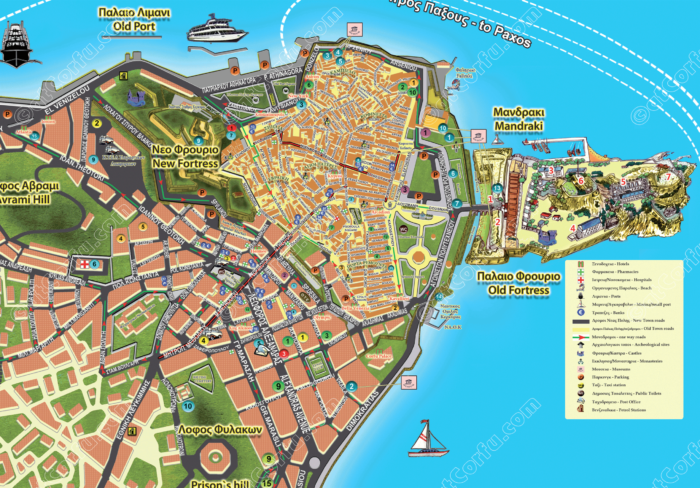

Explore the charming streets of Corfu Old Town with this detailed walking map, which showcases historic sites, shops, and cafes.
Explore Old Town Map
Corfu Town Large Area Road Map


Another map of Corfu’s wider area, including the city’s urban fabric, southern suburbs, and the Kanoni peninsula, extends up to Mouse Island.
See the Map of the Large area of Corfu TownA Large Map of Corfu Town


Focus on Corfu town itself with this detailed city map, perfect for exploring local neighborhoods, landmarks, and amenities.
View Old Corfu Town Map
🏖️ Corfu Beach Maps by Region & Type
Map With the Best Corfu Beaches By Type
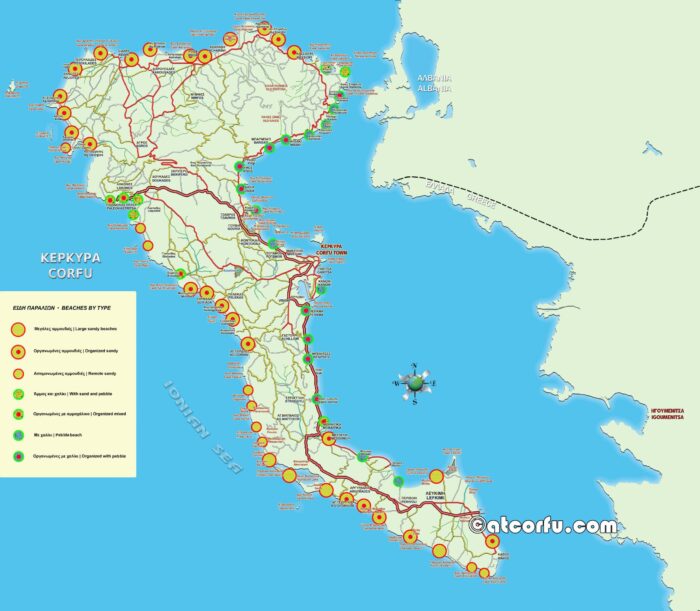

Discover Corfu’s top beaches categorized by type — sandy, pebble, family-friendly, or secluded — so you can pick the perfect spot for your beach day.
See Corfu beaches by typeMap of Beaches in Corfu Island
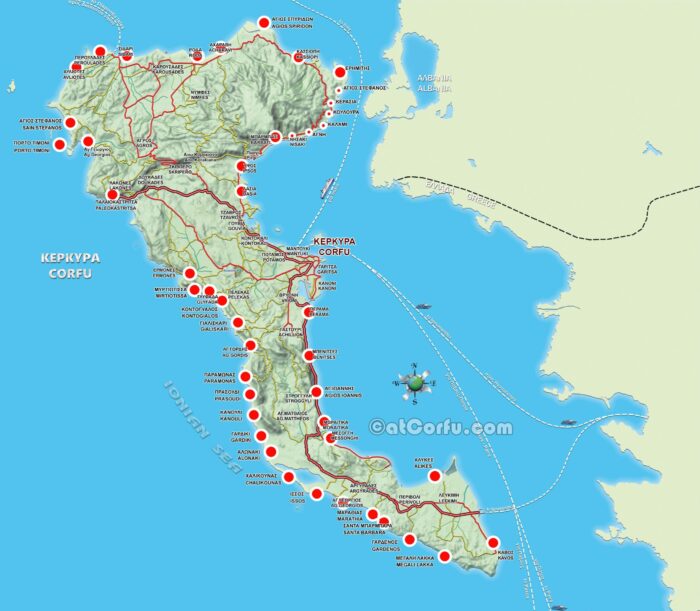

An easy-to-follow map highlighting all major beaches on Corfu, ideal for beach lovers wanting to explore the coastline.
View another Beaches Map
Corfu Beaches by Region: Custom Maps of North, South & Central Coasts
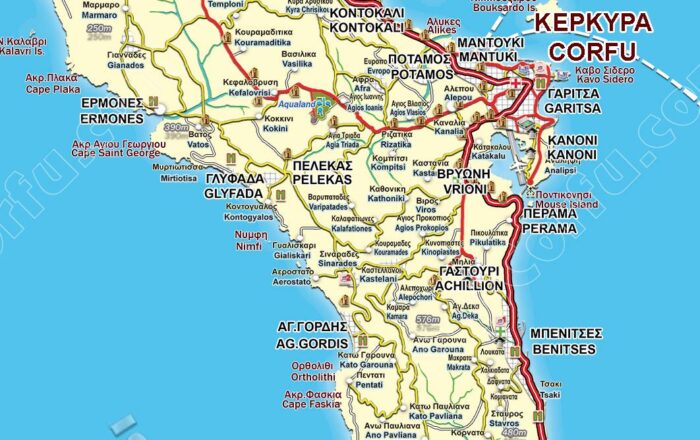

🎯 Maps of Attractions, Distances & Directions
Map with Distances and Directions from Corfu Center
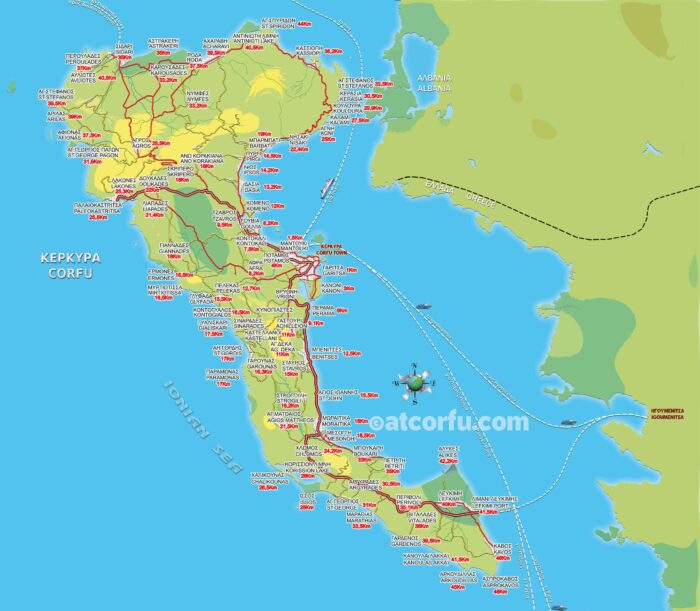

Plan your routes efficiently with this map showing driving distances and directions from the Corfu town center to popular destinations across the island.
See Distances and Directions Map
A map of Corfu Attractions, Sights, and Monuments
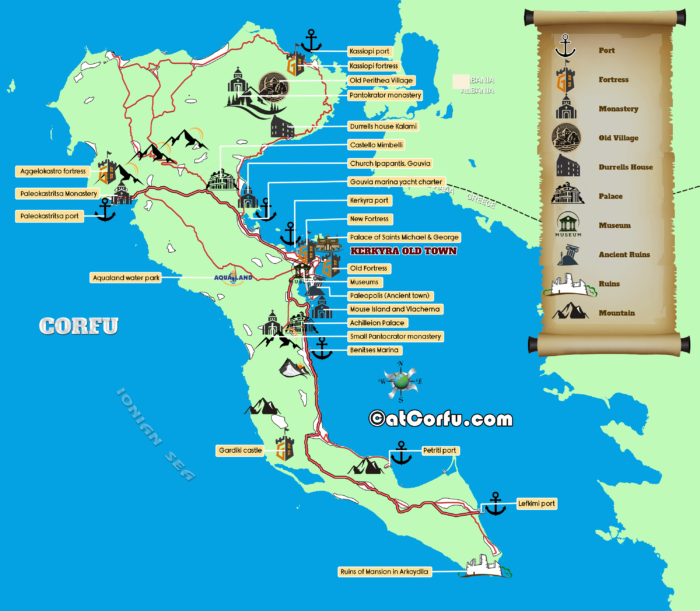

To open the maps at full size, right-click on the map and open it in a new window or a new tab.
Maps of Corfu Beaches
📋 Corfu’s Top Beaches – Full OverviewNOTE: You can download and use the maps only for personal use. Reproduction, printing for commercial exploitation, or alteration of the maps is explicitly prohibited.
On your websites, you may use them only if you provide proper credit with a visible link to the source.




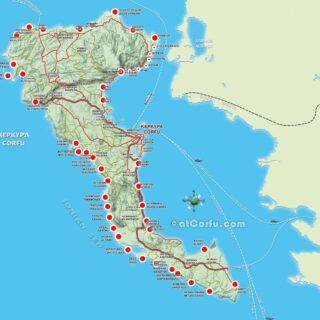
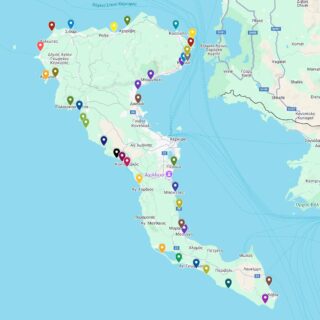
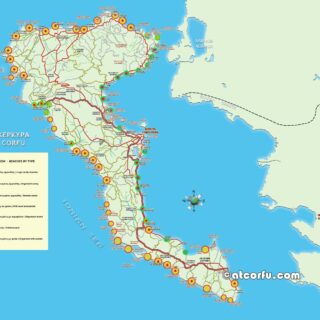
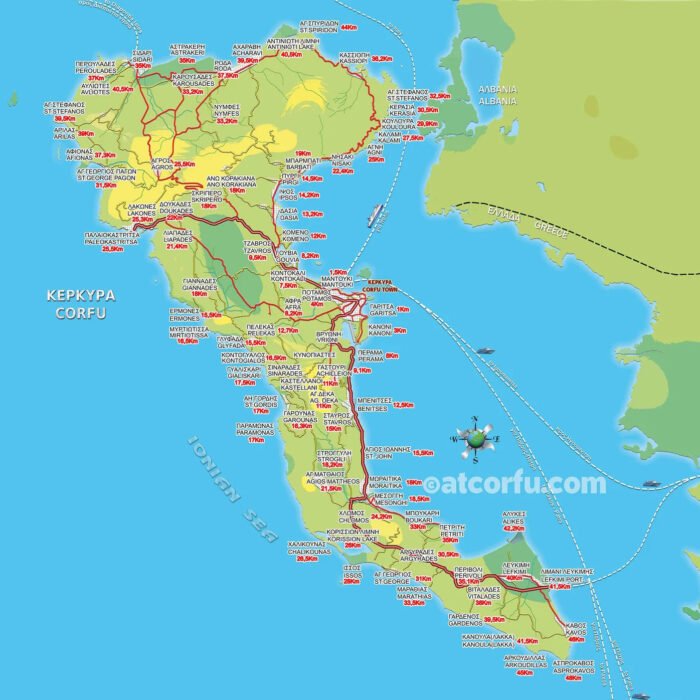


Comments